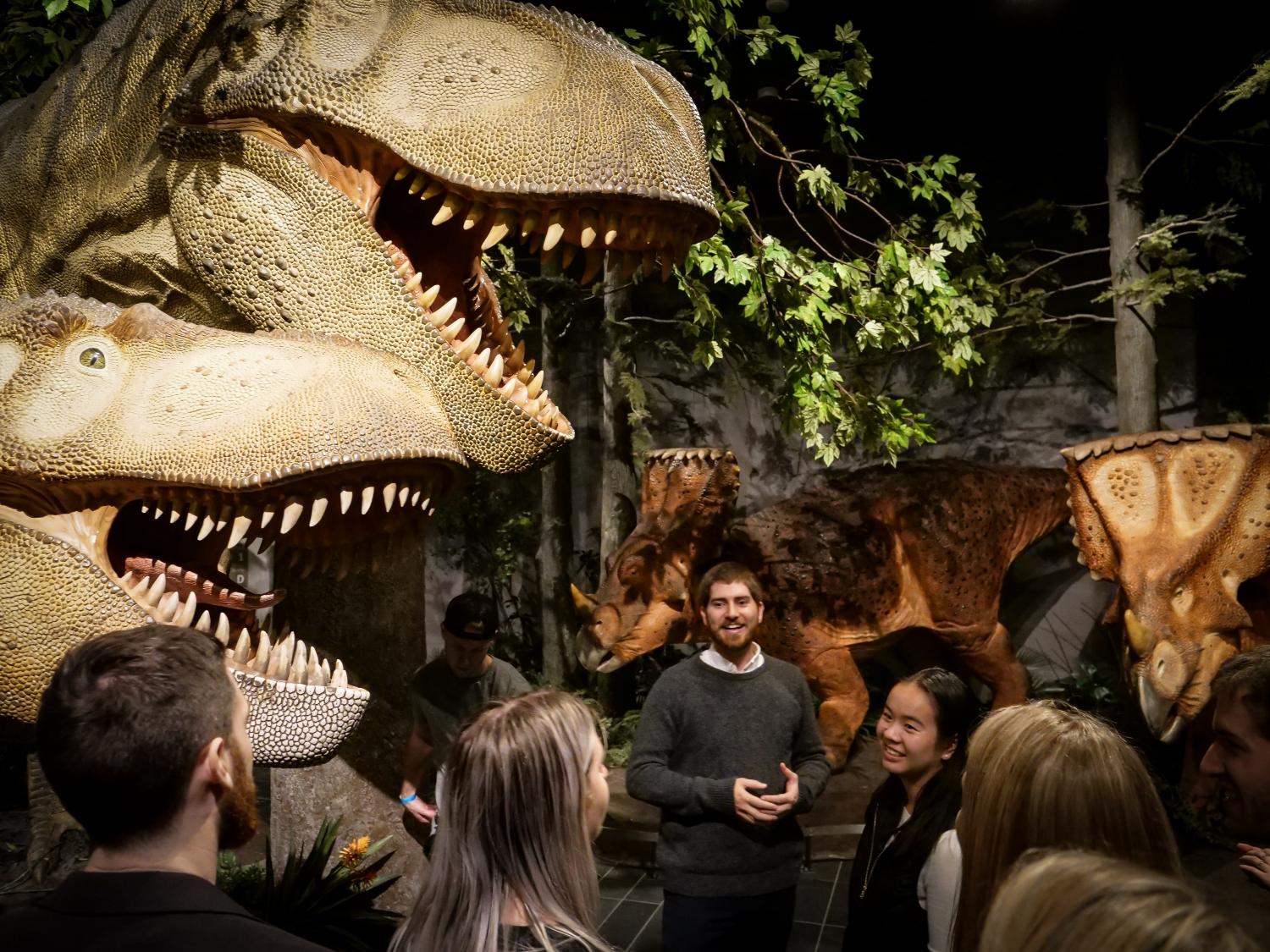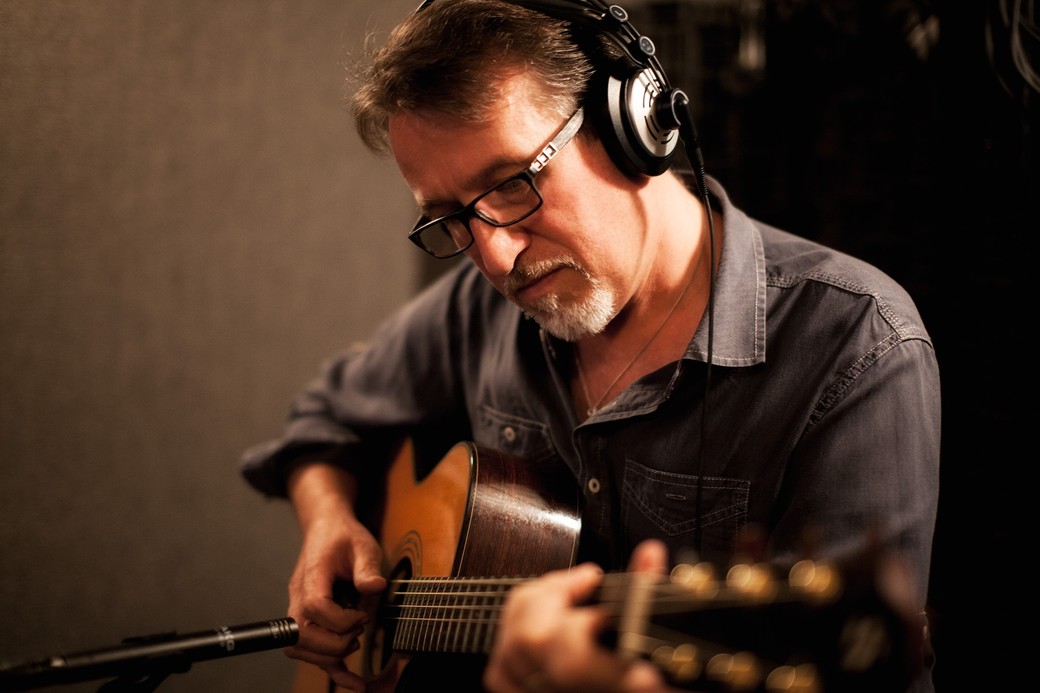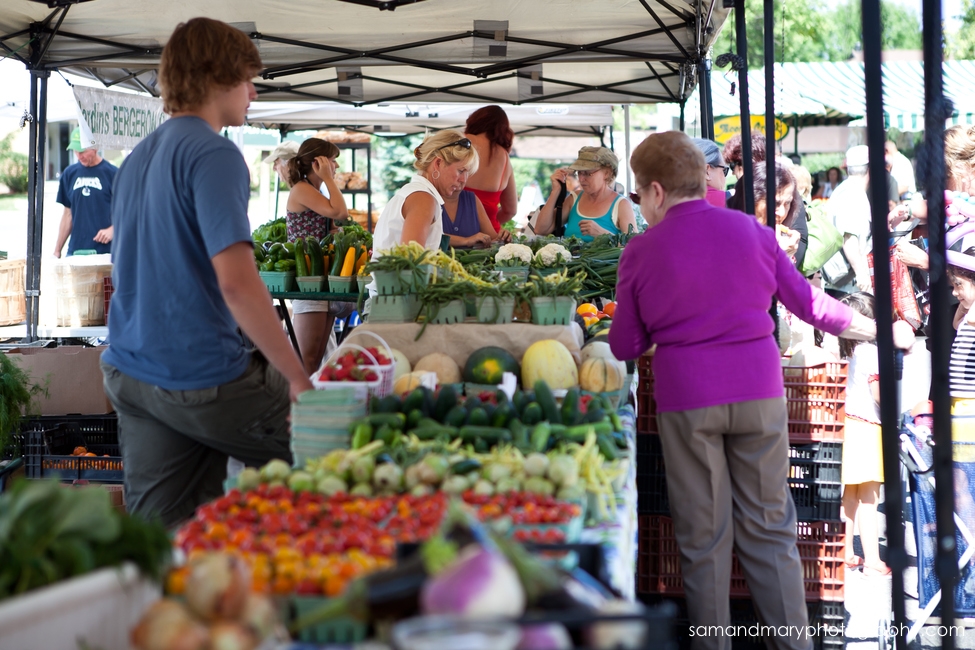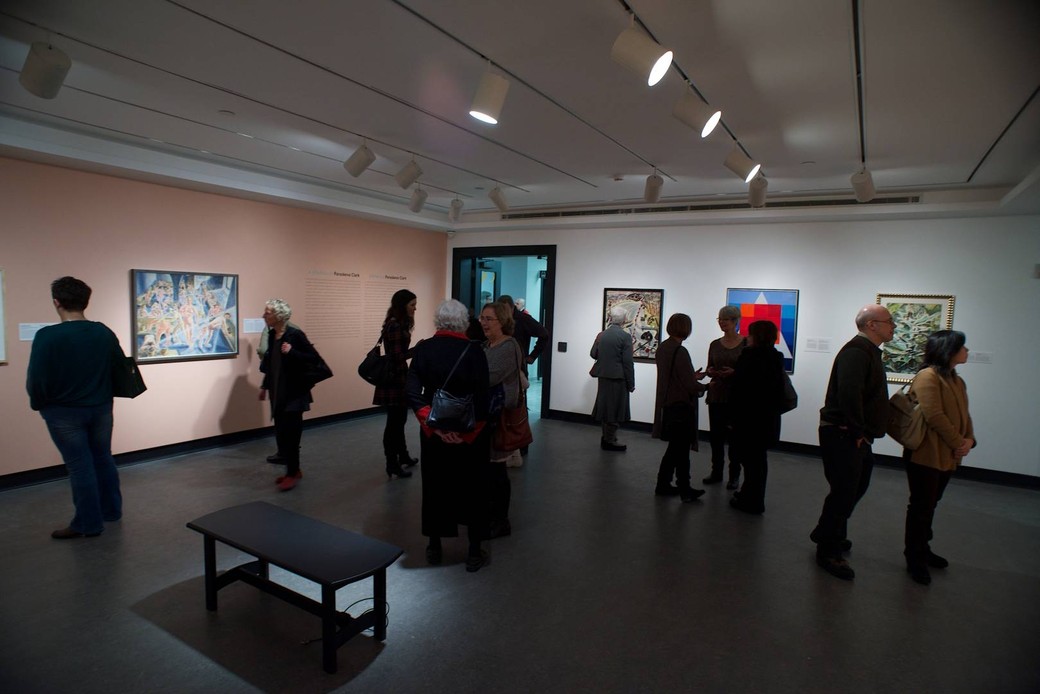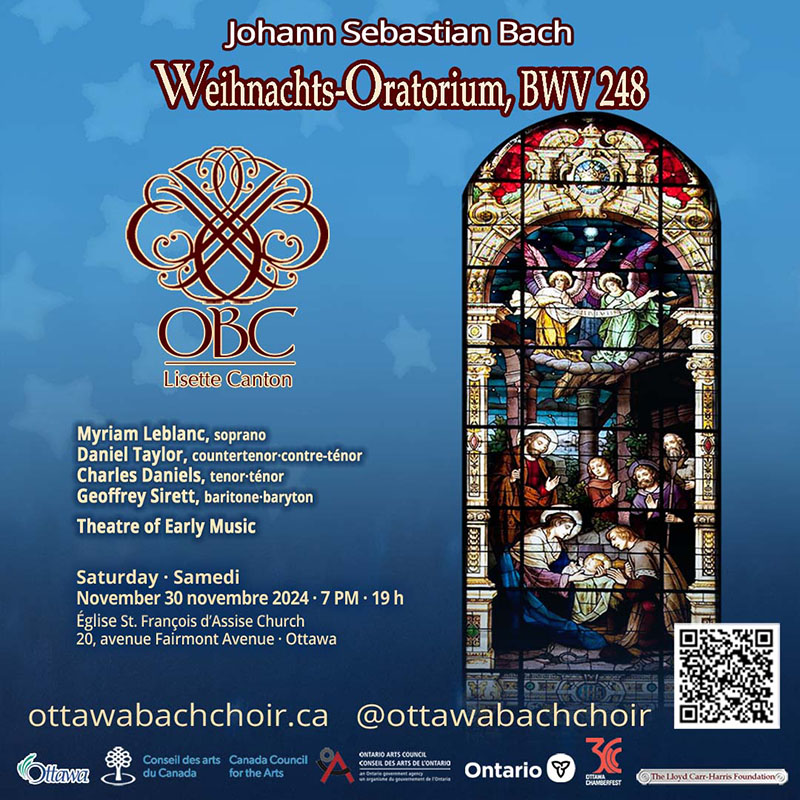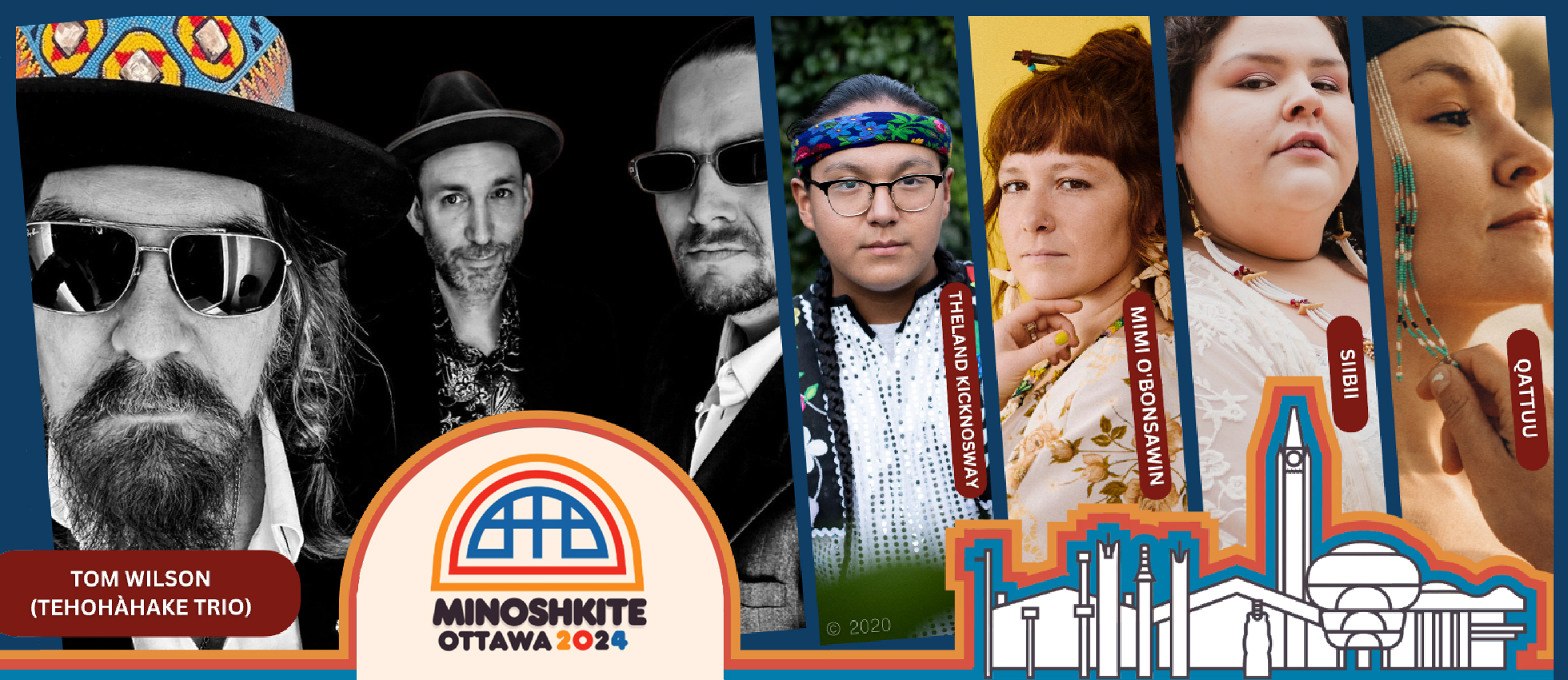
Interview: The Multi-Talented Tom Wilson Talks Art, Music and “Blood Memory” Ahead of the Minoshkite Indigenous Music and Arts Festival
On Thursday, October 3, the Minoshkite Indigenous Music and Arts Festival is set to kick off at Ottawa’s Bronson Centre Music Theatre. The event, named for the Algonquin word Minoshkite, meaning “music to the ears,” will treat guests to an impressive lineup of Indigenous musicians, artisans, and cultural connectors.
The festival will feature performers such as 2024 Ontario Folk Music Awards Performing Artist of the Year nominee Mimi O’Bonsawin, JUNO-nominated Inuk throat-singer Qattuu, and singer-songwriter Siibii. Theland Kicknosway, a Potawatami and Cree hoop dancer and activist, will host the program. These accomplished Indigenous artists are sure to create a dynamic environment of appreciation and learning. Their musical expressions will set the scene for the Gord Downie & Chanie Wenjack Fund, ELMNT FM, and Canada’s Music Incubator to teach guests about Canada’s true history.
Along with providing entertainment and cultural experience, the Minoshkite Indigenous Music and Arts Festival also aims to equip educators and youth with resources that will teach them about the richness, strength, and resilience of Indigenous People. Headlining the feature performers will be three-time JUNO recipient Tom Wilson (Tehohàhake Trio).
Ahead of next week’s Minoshkite Indigenous Music Festival, Ottawa Life Magazine had the chance to talk to Wilson about his remarkable life, art, and journey to uncovering his Mohawk identity.
Tickets for the festival on Thursday, October 3, are free and can be obtained using this link.
Ottawa Life Magazine: Hi, Tom. What are you up to today?
Tom Wilson: I’m busy. I just did a lecture at St. Joseph’s Hospital. BMO has just given over half a million dollars to develop Indigenous communications staff and serve the Indigenous community, which is great. It was very appropriate, and kind of moving for me, because I was born in St. Joseph’s Hospital. My mother was an 18-year-old Mohawk girl who clearly had no rights or consideration from anybody. I was taken from her. She didn’t even know if I was a boy or a girl. She had to wander the halls of St. Joseph’s Hospital, looking through the glass of the nursery, trying to figure out which baby was hers.
It was moving for me because people are trying to take the right steps to make things better. That’s all we can do, man. All we’ve got going for us is the ability to love one another. I know I sound like an old hippie, which I am not, but that’s all I’ve got.
OLM: You’ve been described as a great storyteller. Can you tell us a little bit of your story for our readers who might not know?
TW: I’m 65 years old. I found out ten years ago this week that I was not the big, puffy, sweaty Irish guy I thought I was. I’m actually Mohawk. The people who raised me were my great aunt and my uncle, George Wilson, who was blinded in the Second World War. He was a tail gunner and a Lancaster bomber. It was a rather dark household, and that’s where I grew up.
My mother was a woman who acted as my cousin my entire life—a woman who stood just on the fringe of the picture: Janie Lazare. She’s Mohawk from Kahnawake, and my father’s Mohawk from Kahnawake. Now, I’m very honoured to say that. They gave me the Order of Canada last year. That was an incredible honour, but it is more of an honour to me to be officially a Mohawk of Kahnawake. I’ve been accepted by that community. That’s a big deal for me in my journey.
OLM: That’s very powerful.
TW: Finding out at 54 years old that the blood running through you is not the blood that you thought it was causes a journey for identity. Now that I know where I’m from, my job is to bring the Mohawk culture into the light. My job is to create art and write books and make movies. There’s actually a play that I wrote that will be coming to Ottawa sometime in the near future.
OLM: I saw that you’ve made a musical based on your memoir, Beautiful Scars. Is that the same one?
TW: Yeah, that’s the one. That’s going to be touring Canada. These projects are important steps for me because they’re me serving my community the best way that I know how.
Outside of that, I’ve taken steps to physically be involved with bettering the world for Indigenous people. I started the first Indigenous scholarship at McMaster University for any Indigenous child in Ontario who wants to further their education. Every Indigenous kid who becomes a doctor, a lawyer, or an engineer is a win against colonialism. I’m here to make wins against colonialism. We have to break those chains. We have to walk our path, be proud, and wear our colours.
I also got arrested three years ago as a land defender at 1492 Land Back Lane on the Grand River, part of the Six Nations. The Mohawks that were there were depicted by the press and by the politicians in town as terrorists. When I arrived, there were a bunch of kids playing lacrosse in the field. I brought them food. Because of that, the Government of Ontario arrested me.
OLM: I also wanted to talk to you about a moment in your documentary where you discuss how your mother, Jane, was told at her daytime residential school that she was going to be the last Indigenous generation to ever exist. How does that impact the way you see the younger generations of Indigenous people, not only existing but also thriving and making art today?
TW: First of all, it makes us stronger. It makes me stronger. It makes me more determined to be able to break away from the trauma of our parents and of our ancestors. There’s no Indigenous person, not one Indigenous person that you know, or that you run into, or that you shake hands with that hasn’t been affected by the residential school system—either the parents or grandparents. Canada is responsible for one of the grossest and most inhumane attempts to wipe out a civilization in the history of the world. So, Canada, we have work to do.
We’re not going to get work done by pointing fingers and calling names. We’re going to get work done by recognizing each other and acknowledging the love that we can have for one another. That’s the path forward. I just finished lecturing at a hospital on reconciliation. Now, I’m going to my studio to paint. This is my job. This is what I do to sustain whatever goodness I have.
OLM: I’m happy that you brought up your art. I’m wondering if your artistry—whether that be writing, music, or visual art—ever served as a healing outlet in the dark times of your life.
TW: It’s my salvation. The ability to isolate yourself and not have to be concerned about Twitter, newsflashes, or the B.S. of the world is a gift. The creative process has saved me. It’s literally kept me out of jail. You know, being a musician, being a writer, being a visual artist—those things are great therapy for you. You can take shelter there.
I’m shortlisted for playwright of the year. It just happened this week. When you do shit, it’s very satisfying. The job of creating something that wasn’t there yesterday—there’s a lot of weight in that. I don’t even care if it’s a stick figure on a piece of paper. It’s important.
OLM: In your film, you say that everyone is born an artist. Can you tell me more about that idea?
TW: We all sing and dance freely. We make up stories, we draw pictures with no inhibition, and then we go to school, and they f*ck us. We all have to stand in line and we all have to learn exactly the same thing at the same time. That’s not how we are as human beings. We all work and flow through this life at different paces—art allows us to set the time on that. My wife is a teacher, by the way, so I’m not trying to tear down the walls of education. I’m just saying that the structured world really strips away any chance for us to flourish with free and creative minds.
OLM: Your journey is very much a quest for identity, seeing as it was quite literally stripped away from you. I’m wondering how your art has changed as an effect of finding out about your Mohawk identity.
TW: A book has been published on my art up to this point. I’ve got a piece going in the McMichael gallery in Kleinberg. But the reason it’s getting noticed is because the art is honest. I’ve been painting like this since 1997.
About 15 years ago, my daughter said, “Dad, you’ve gotta stop painting like this. This is cultural appropriation.” Well, that was just what was coming out of me. Of course, 10 years later, I found out that I am Mohawk. That’s a serious testament to blood memory. Our identity fights and elbows its way out, trying to get us to recognize it. I mean, even if you know who your mother and father are, there is enlightenment in creation.
OLM: Can you think of any other instances—perhaps outside of art—where your Mohawk roots were surfacing before you even knew about your heritage?
TW: I had a dream years ago; they started when I was a kid. I was trying to get across a body of water, and out of the bushes came a guy named John Lazare (who I knew as Uncle John, but who was actually my grandfather).
In the dream, he says, “Get on my back and I’ll take you across the water.” As we start to make our way across this body of water, he turns into a turtle and starts to lift up off the water. I realized later that I am Turtle Clan and that the man was my grandfather. The body of water that I was trying to get across was the Saint Lawrence Seaway. I was trying to get myself home.
Those dream messages and metaphors added up to a very important message. We are very cosmic f***ing beings, man. We just don’t pay attention, the same way we don’t really pay attention to our creative forces.
OLM: What do you hope that non-Indigenous people can learn from the Minoshkite Indigenous Music Festival?
TW: How f***ing good we are. What blood was running through me didn’t matter when I was getting Juno’s and gold records and shit. . . Didn’t matter that I was a Mohawk or not. I was just doing it.
OLM: If you could choose three of your songs that best encapsulate your story, which songs would they be?
TW: “Grand River” from Blackie and the Rodeo Kings, “Big Chief” from Lee Harvey Osmond, and “Standing the Line,” which is a song that I wrote with Daniel Lanois and Terra Lightfoot. That one is also in the play.
OLM: Thanks so much, Tom.
Don’t let your chance to see Tom Wilson play live in Ottawa pass you by, and be sure to watch his documentary as well.
Doors open at 7:00 p.m. on Thursday, October 3, for this all-ages event. Get your tickets to the Minoshkite Indigenous Music and Arts Festival by clicking this link.
The Minoshkite Indigenous Music and Arts Festival is made possible through funding from Canada Arts Presentation Fund (CAPF), along with several supporting sponsors: Ontario Lottery and Gaming Corporation (OLG), Meridian Credit Union, Long & McQuade, The Bronson Centre Music Theatre, Red Music Rising, and Aboriginal Peoples Television Network (APTN). Festival organizers acknowledge that Ottawa is built on un-ceded Anishinabe Algonquin territory.

